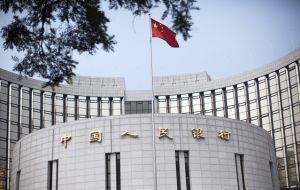MercoPress. South Atlantic News Agency
Chinese banks allowed setting lending rates in hopes of lowering costs
 The People's Bank policy is seen as a significant part of Beijing’s plan to make the economy more market-orientated.
The People's Bank policy is seen as a significant part of Beijing’s plan to make the economy more market-orientated. Chinese authorities have given the banking industry greater freedom by allowing banks to set their own lending rates. Previously they were not allowed to lend at rates below a certain level set by the People's Bank of China (PBOC).
The People's Bank said it hoped the move would lead to lower costs for companies. It is being seen as a significant part of the government's plan to make the economy more market-orientated.
The bank ended a floor on borrowing costs previously set at 30% below the benchmark. The limit on mortgage rates will stay to curb property speculation, the PBOC said. Also unchanged was a 10% limit on what banks can offer over PBOC-set deposit rates.
Forcing banks to compete for funds would offer consumers more spending power, while undermining the model of state-directed, subsidized credit bequeathed to Premier Li Keqiang who took office in March. At stake is phasing in reform without exacerbating a slowdown in the world’s second-largest economy.
A government report July 15 showed GDP rose 7.5% in the second quarter from a year before, extending the longest streak of sub-8% expansion in at least two decades.
While removing the floor for lending rates offers the prospect for cheaper funding -- after a record liquidity squeeze last month -- banks haven’t been availing themselves of the leeway they previously had to charge less. In the first quarter of 2013, about 11% of bank loans were made below the benchmark rate, and about 64% above it, PBOC data show.
Savers have for years suffered artificially low deposit rates as the government subsidized state-owned enterprises through the banking system by giving them cheap credit to spur investment and economic growth. Freeing those rates would benefit households and help the government’s long-stated goal of rebalancing the economy away from its dependence on investment and exports and toward consumption.
Returns on savings that have lagged behind inflation have encouraged them to boost savings to meet target income levels, according to a 2011 IMF working paper by Malhar Nabar.
The report, which calculated that China’s urban household savings rate rose to 30% of disposable income in 2009 from 19% in the mid-1990s, estimated a 1 percentage-point increase in the real rate of return on bank deposits would lower the savings rate by 0.6 percentage points.




Top Comments
Disclaimer & comment rulesCommenting for this story is now closed.
If you have a Facebook account, become a fan and comment on our Facebook Page!